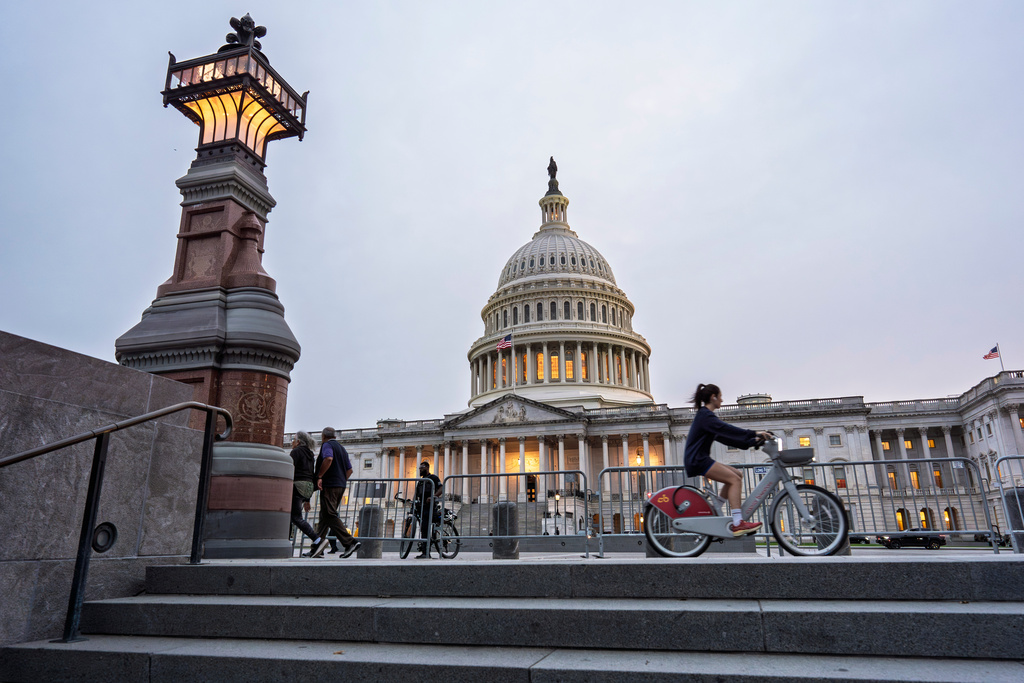U.S. Government Shuts Down After Senate Funding Bill Fails, Trump Threatens Cuts

The United States entered a partial government shutdown early Wednesday after deep partisan divisions in Congress blocked passage of a temporary spending bill, marking the country’s 21st such closure since 1977 and setting the stage for a bruising political battle.
The Gaze reports this, referring to Reuters.
Funding for federal agencies expired at 12:01 a.m. ET after the Senate rejected a stopgap measure that would have kept the government running until late November.
Democrats voted against the bill, arguing that it failed to extend subsidies under the Affordable Care Act that are due to expire at the end of the year. Republicans insisted the health-care issue should be handled separately.
The shutdown immediately triggered the furlough of about 750,000 federal employees and the suspension of pay for U.S. troops and essential staff such as air-traffic controllers, who will continue to work without compensation. The daily economic cost is estimated at $400 million, according to independent analysts.
President Donald Trump has warned Democrats that the shutdown could pave the way for “irreversible” actions, including further reductions in federal programs and the workforce.
His administration is already overseeing the largest exodus of civil servants in decades, with more than 150,000 employees leaving government service this week under buyout offers designed to shrink the bureaucracy.
Which services will remain open – and which will close in the shutdown?
While essential programs such as Social Security, Medicare, Medicaid, and food assistance will continue, their operations are strained. Federal courts have warned they may run out of funds within days, while airports face mounting pressure as thousands of staff are forced to work without pay.
In addition, key government services, including scientific research and the release of crucial economic data such as the September jobs report, have been halted, raising concerns among investors and policymakers.
Could the U.S. Shutdown Affect Military Aid to Ukraine?
The U.S. government shutdown is not expected to have an immediate impact on American support for Ukraine.
Since returning to power, President Donald Trump has not launched new aid initiatives for Kyiv. Instead, Ukraine continues to receive arms through programs authorized under President Joe Biden, including the Presidential Drawdown Authority (PDA) and the Ukraine Security Assistance Initiative (USAI), which still provide matériel from previously approved funds.
Ukraine also benefits from the Prioritized Ukraine Requirements List (PURL), a system under which the United States supplies weapons purchased for Kyiv by European allies, either from U.S. stockpiles or directly from American defense manufacturers. The Pentagon, now formally renamed the Department of War under Trump’s orders, plays a coordinating role in this process.
Analysts say that a short-term shutdown would have little effect, as ongoing programs remain funded. However, if the deadlock drags on and the Pentagon faces staffing and administrative slowdowns, delays in managing new weapons contracts for Ukraine could emerge.
At present, the White House has even launched a “shutdown clock” on its website, highlighting the duration of the standoff in real time.
This shutdown could prove more severe than previous ones. The longest closure in U.S. history, lasting 35 days during Trump’s first term in 2018–2019, was sparked by a dispute over border wall funding.
Analysts now warn that today’s impasse may last even longer, given the scale of partisan confrontation and Trump’s stated willingness to use the shutdown as leverage to permanently reduce the size of government.